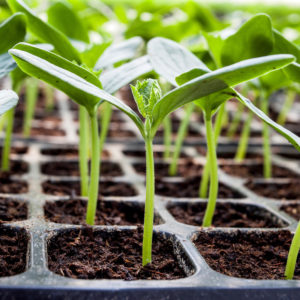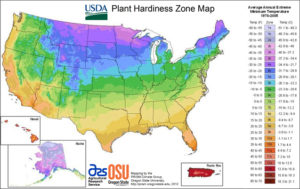 I put together a post last year on how to plant seeds, but I’d like to take a few steps back and talk about knowing when to plant seeds. Much of what I’ve learned about seed timing has been anecdotal. I use a number of planting charts that I’ll share momentarily, but I want to start by asking you about success.
I put together a post last year on how to plant seeds, but I’d like to take a few steps back and talk about knowing when to plant seeds. Much of what I’ve learned about seed timing has been anecdotal. I use a number of planting charts that I’ll share momentarily, but I want to start by asking you about success.
When was the last time you tried something new and had immediate success? You can’t remember? Maybe never? Oh, you say you had to practice to get better? Hmm… that’s funny, because I hear people talk about gardening failures and how they just don’t have a green thumb all the time. These same people planted one garden, a failure garden, and then immediately assumed that they weren’t cut out for cultivation. I’ve had countless gardens – some good, some bad, some great and some really, really terrible. But each of these gardens taught me something about plant growth and now I’ve got a pretty stellar plot that really cranks out some produce. So, be patient with yourself, keep trying and I promise you’ll get better.
 USDA Plant Hardiness Zones
USDA Plant Hardiness Zones
There are two ways (technically three, but I’ll discuss that later) to establish plants for your garden. First things first, figure out when to plant seeds. You need to know which USDA zone you live in before you can decide when to plant seeds. You can refer to the map to the right or simple follow this link to the USDA Plant Hardiness Zone Map where you can insert your zip code and get your precise zone based on your location. Zones are determined by the average last and first days of frost, and average annual temperatures. Last and first days of frost are extremely important dates for gardeners since some plants (like tomatoes) you wouldn’t dream of planting outside till the danger of frost has passed. Zones are also extremely valuable when selecting perennials such as blueberries, figs, apples, asparagus, etc. Some perennials are suited for colder climates, while others are better suited for warmers climates. A great example are figs: I live in zone 7a and I selected a variety of fig, the Chicago Hardy Fig, that’s hardy to zone 5. Most figs wouldn’t survive in this climate, but the Chicago Fig will. These are valuable pieces of information you need to know.
Planting Charts
Now that you know your zone, you can start to inquire about planting charts. You can either google “[your zone] planting chart” or ask Google to produce a planting chart for your town or city. Here’s what’s confusing – all charts are slightly different. Depending on your source’s particular calculations, they may recommend planting broccoli seeds indoors in mid-February or they may recommend mid-March. What I’ve learned is that when it comes to starting plants indoors, earlier is usually better (I’ll elaborate in a moment). If you missed your window, don’t fret, but allowing those plants adequate time to establish healthy roots before planting out seems to be beneficial. Use your chart as a guide, but know that it’s not a perfect road map to success. What’s most important is that you note the first and last frost dates and then keep an eye on the 10-day forecast.
When to Plant Seeds in the Ground
When it comes to knowing when to direct seed (plant your seeds directly in the ground rather than starting seeds in flats indoors) you’ll have to start with your planting chart, but fudge those dates based on current weather patterns. If you look at your seed packet, you’ll often see soil temperature recommendations for optimal germination. Seeds like lettuces, spinach, beets, collards, kale, broccoli, cauliflower and a few others require much lower soil temperatures (and can withstand light frost once germinated) compared to seeds like tomatoes, peppers, cucumbers, melons and squash. If my planting chart says that I can start planting lettuce in early April, my seed packet indicates that soils temps greater than 50 degrees are adequate for germination, and I see that the weather looks particularly warm in early March, well, I go ahead and throw those bad boys in the ground. So, use your chart as a guide, but always keep an eye on the weather patterns and suggested germination temps, which will be your biggest indicators of when to plant seeds.
While you can plant almost any seed in the ground, there are some that are more desirable for direct seeding. These include beans, beets, carrots, cabbage*, chard*, corn, cucumber*, garlic, kale*, lettuces, melons*, okra, parsnips, potatoes, pumpkins*, rutabagas, radishes, squash (winter and summer)*, and turnips. Plants with asterisks can also be easily started in flats depending on space availability and growing season length, but I prefer to direct seed.
When to Plant Seeds Indoors
As I briefly mentioned above, earlier is better when it comes to starting plants indoors. Many seed packets and planting charts suggest 8-12 weeks to allow plants to grow in flats, but I’ve noticed that this isn’t always adequate. If you have a greenhouse or other germination site that allows for tons of warmth and sun, you might be okay. But, that’s not actually the case with many home gardeners. I have a small seed starting shelf with a single grow light above each shelf. The shelves are placed in front of a mostly sunny window and while the lights certainly help, the amount of sun that my seedlings receive doesn’t mimic outdoor conditions. I move the plants outside on warm days and am careful to bring them back inside when frost threatens, but they grow slow because they don’t have ample sunlight.
Starting your plants indoors early is extremely important for climates with the shortest growing seasons. I spent four years in Vermont and starting seeds early allowed ample time for the plants to actually mature over the course of the growing season. Now that I’m in western NC, I’m not as particular. For example, I now direct seed plants like cabbages, kale and collards, which I typically started indoors in VT.
I’ve tried a variety of techniques for indoor growing, but I’ve found that the 9- and 6-pack plastic cells work the best. I’ve tried the plug trays, which certainly optimize space, but these are pretty difficult to keep from completely drying out. I’m using biodegradable peat packs this year, but I can already tell that I don’t like them. For starters, they’re much larger than the 9- and 6-pack cells, which means I wasn’t able to start as many seeds in the same amount of space. Secondly, the peat pot seems like it will draw water from the soil, which will make it difficult to keep the plants moist. I’ll report back at the end of the season, but I’m wishing I had taken the time to order more plastic cells rather than just buy what was available at Lowes.
I buy a good potting soil (organic if available) for a seed starting medium. I’ve tried other soils, but the potting soil mix is one that retains moisture, yet drains well too.
Plants that I start indoors include broccoli, Brussels sprouts, cauliflower, celery, eggplant, leeks (from seeds), onions (from seed), peppers, and tomatoes. You can certainly start many of these by direct seeding, but I’ve found it easier and more cost effective to start them indoors.
Keep a Garden Log
If you’ve taken all this time to figure out when to plant seeds, you should do a bit of note keeping. In all the years I’ve been gardening, this is the first year that I’m starting an actual garden log. I’ve experimented quite a bit along the way and I always assume that I’ll remember what worked or didn’t work the following year, but I have two young kids… I can’t even remember what I ate for breakfast let alone what day (or even month) I planted celery in 2016. I’m now keeping a log with brief notes that include planting dates, favorable varieties, planting location, and any other notes I think are important. One note that I included this year was that I planted spinach during a warm spell in February and it totally worked! See, you gotta keep an eye on that weather.
When to Buy Plants
Last year was the first year that I successfully grew all of my plants from seed (except for a few eggplants that caught my eye at the farmer’s market). Starting every plant from seed is a big undertaking and requires that you meticulously tend to your plants for a few months. I had to figure out the best way to grow seeds, when to plant seeds, the best growing medium, and how to keep the seedlings from being over-watered or drying out. One of the years we lived in VT I had successfully grown 20 or so amazing heirloom tomato plants. I accidentally left them out one night and a light frost killed every last plant. I was so annoyed that I had spent all those months caring for my precious little seedlings only to lose them to a careless mistake.
My point is that growing plants from seeds doesn’t always work the first time around. Try what you feel comfortable with, but know that you can always buy plants from the farmer’s market if things go south. But here’s the kicker… buy the plants from the farmer’s market, not Lowes or any other large box store. The varieties that you’ll find at the farmer’s market are varieties that have been selected for production in your climate.
Purchasing Seeds
Knowing when to plant seeds also means that you need to get to ordering before it’s too late. I primarily order seeds from High Mowing Organic Seeds or Turtle Tree Seed, a small biodynamic seed company in NY. I use Turtle Tree for smaller orders (their seeds can be a bit pricier), but I made a huge order from High Mowing last year (around $300 in seeds). Now that I have a large seed collection, I’ll likely be replacing most of the seeds with Turtle Tree.
I was tempted to order from Johnny’s Seeds this year, a large company that has a huge selection of organic seeds, but I wanted to support Turtle Tree instead. Profits from Turtle Tree support a working farm that provides homes to hundreds of mentally handicapped adults. It’s one of the very few group homes that provides its residents with genuine quality of life. Know that you’re supporting something incredible when you chose to purchase from Turtle Tree.
I’d love to hear from you if you have any questions and don’t forget to share this article with your friends!
Leave a Reply